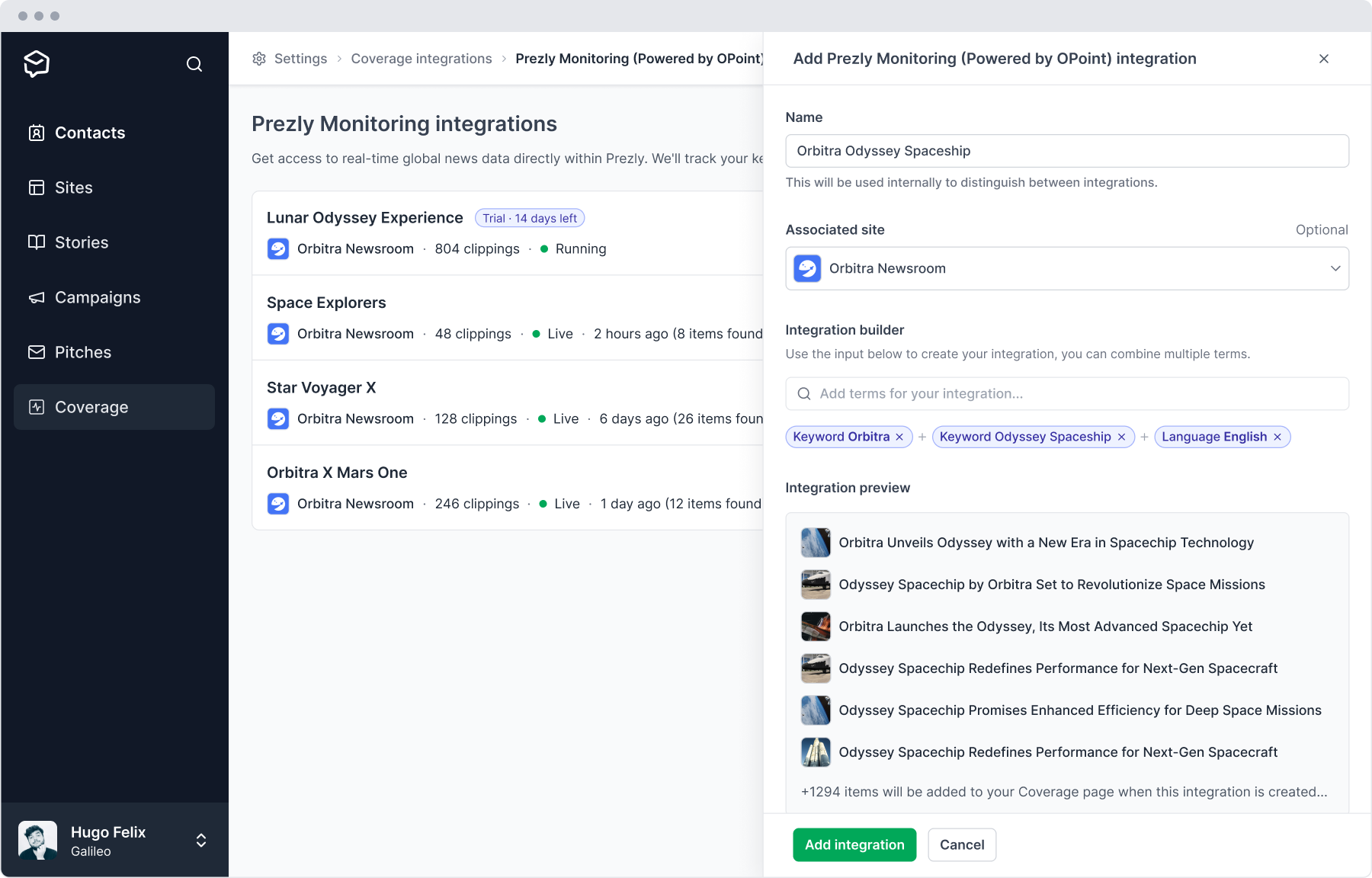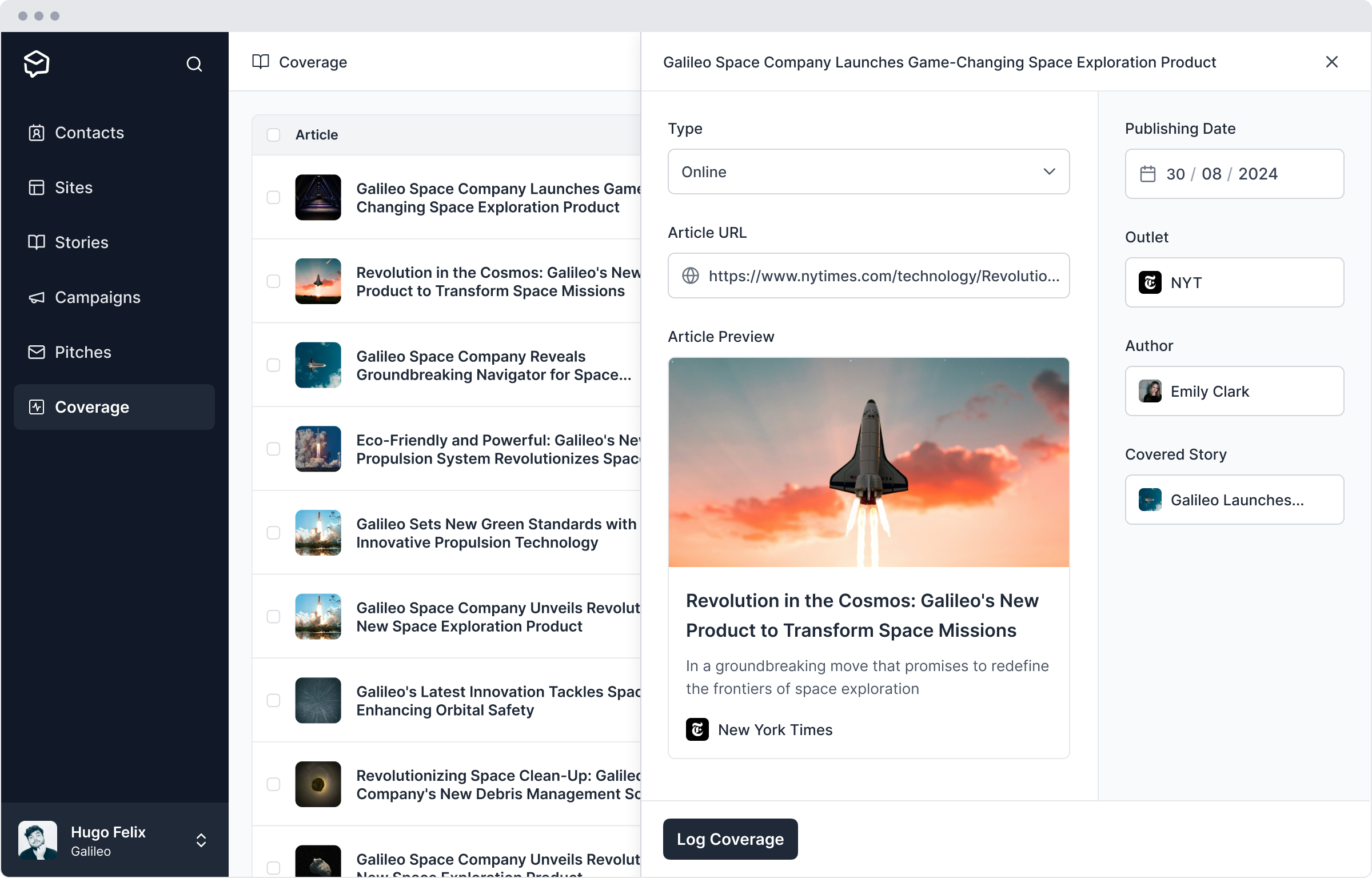Advertising value equivalency is outdated – here’s what to use instead
What is AVE, why do so many PR pros roll their eyes at it, and what’s a better way to measure your results in 2025?
It’s one of the most polarising metrics in public relations – some swear by it, others can’t stand it. And if you’ve ever been asked to put a dollar amount on your media coverage, you’ve probably come across it: advertising value equivalency (AVE).
At first glance, AVE sounds like a useful shortcut: an easy way to translate PR wins into business language. But the reality is a lot more complicated – and controversial.
So what is AVE exactly, why do so many PR pros roll their eyes at it, and what’s a better way to measure your results in 2025?
Let’s break it down.

Advertising value equivalency (AVE) is a legacy PR metric used to assign a monetary value to earned media coverage based on ad rates. It estimates how much it would’ve cost to purchase an equivalent-sized ad in the same publication, TV slot, or online platform.
In theory, it puts a dollar value on your press coverage. If your news article appears in The Guardian and would’ve cost $15,000 to run as an ad? AVE value = $15,000. Sounds simple, right?
Sort of.
Many PR teams also add a multiplier to their AVE formula – 2x or 3x – under the logic that earned media is more valuable than advertising because it’s seen as more trustworthy.
But that’s exactly where the issues begin.
PR is not advertising. The PR value of earned media lies in credibility, context, and audience trust. You can’t compare that to paid media with a 1:1 price tag.
A long, bland mention on a popular news site might generate a higher AVE than a niche article that deeply resonates with your target audience. That’s not a win.
There’s no universal advertising value equivalency formula, and different PR agencies and modern PR tools calculate it differently. One agency’s $5,000 is another’s $50,000.
A negative article that mentions your brand still counts toward your AVE total. That’s like counting a bad Yelp review as a win because it got views.
Try explaining why a media hit is “worth” $10,000 when there’s no actual money involved. It leads to awkward conversations with clients and execs who expect ROI.
International associations like AMEC and the PRCA have publicly denounced AVE. In fact, AMEC’s Barcelona Principles – considered the gold standard for PR measurement – specifically reject AVE as a valid metric.
Despite all its flaws, AVE sticks around because:
- It’s easy to calculate
- It gives non-PR stakeholders something familiar
- Some clients still ask for it
It’s understandable – many marketers and execs are used to ad spend, CPMs, and media buys. AVE can feel like the easiest bridge.
But in the long run, leaning on AVE could actually hurt your PR efforts. It's a vanity metric that undervalues the strategic side of public relations, excludes qualitative data, and doesn’t reflect the full picture.
Some PR pros still use AVE as a basic benchmark or as one line in a wider report. In rare cases – such as for legacy clients or in ad-heavy industries – it might be helpful to show AVE alongside more nuanced metrics, like social engagement. If you must include it, frame it clearly and avoid letting it overshadow better indicators like sentiment or share of voice.
The good news: you don’t need to rely on AVE to show the true value of your work. Here are some more meaningful PR metrics to consider:
Look beyond the headline. Ask:
- Does the article include key messages?
- Is your PR spokesperson quoted?
- Is your brand linked or featured visually? For more, see press release mistakes to avoid and solutions to improve your next release.
Was the PR mention positive, neutral, or negative? This gives you insight into your brand’s reputation over time.
Track how much of the media conversation your brand owns compared to competitors. Tools like social listening platforms and media monitoring software can help here.
Measure clicks, social media analytics, time on page, or referral traffic from your earned coverage – especially when linking back to your website or newsroom.
Earned backlinks from media coverage can boost your search visibility and domain authority.
Instead of raw UVPM numbers, focus on whether your earned coverage reached your actual target audience. Did it appear in trade media, relevant blogs, or platforms your customers use?
Whenever possible, link PR outcomes to business results:
- Leads or sales from referral links
- Improved brand perception in surveys
- Increased traffic to product pages
This isn’t always easy to quantify, but tying PR efforts to broader marketing campaigns can help create those links.
Ready to take the guesswork out of your PR strategy?

You don’t have to flat-out refuse – just reframe the conversation.
Instead of saying: “We don’t do AVE.” Try: “Here’s why AVE doesn’t show the true value of your coverage. Instead, we track other metrics – share of voice, sentiment, and messaging alignment – to get a more accurate picture.”
Clients and stakeholders don’t need AVE – they need clarity. Your job is to show them what success really looks like.
If you're shifting away from AVE, bring clients along for the ride. Offer them an easy-to-read dashboard, visuals of editorial coverage impact, or short explanations for metrics like sentiment, engagement, or SOV. Education builds trust and helps steer conversations toward PR value, not vanity metrics.
Getting buy-in for your PR strategy means showing how your work moves the needle on real business goals. This is where data comes in.
Start by aligning your PR metrics with broader KPIs like website traffic, lead generation, customer acquisition, and brand sentiment. Tools like Google Analytics (GA) and CRM platforms can help show correlations between earned media coverage and spikes in site visits, sign-ups, or sales.
Track accurate metrics over time, not in isolation. For example, a rise in Share of Voice (SOV) paired with improved brand sentiment and growing traffic to product pages? That’s a strong narrative. Show patterns, not just peaks.
You don’t need perfect attribution – just a clear timeline and consistent metrics to show PR’s role in driving awareness, shaping perception, and supporting conversion across channels.
Spoiler: It’s not AVE.
Stakeholders aren’t asking for PR to look busy – they want proof that communications are moving the needle. And while AVE slaps a dollar sign on media coverage, it rarely answers the question C-suite care most about: Did this PR campaign help us reach our goals?
Here’s what leadership is really looking for:
- Visibility with the right audience – Not just impressions, but presence in outlets your target customers trust
- Message alignment – Are your key talking points showing up in coverage, and are they being repeated back to you by prospects or press?
- Reputation tracking – During a product launch, leadership change, or crisis, they want to see how the narrative is shaping and whether sentiment is trending up or down
- Support for strategic goals – Whether it's entering a new market, increasing investor confidence, or growing share of voice, they want to know PR is aligned
- Momentum – They want to see that people are talking, journalists are engaging, and your PR campaigns are building traction over time
In short: execs want PR to prove its impact. And that’s exactly why better metrics matter.

Tracking news coverage isn’t just about seeing your name in headlines. It’s about understanding the impact – and that’s where tools like Prezly come in.
With Prezly, you can:
- Monitor media mentions in real time
- Track audience engagement on pitches
- See web analytics for your newsroom
Unlike AVE, these metrics give you insights you can actually use to improve your PR strategy.
Try Prezly free for 14 days and see how easy meaningful measurement can be.
Start 14-day free trialReady to start growing your media reach?
With Prezly you can publish press releases online, and share them directly with journalists. 14-day free trial, no credit card required.
